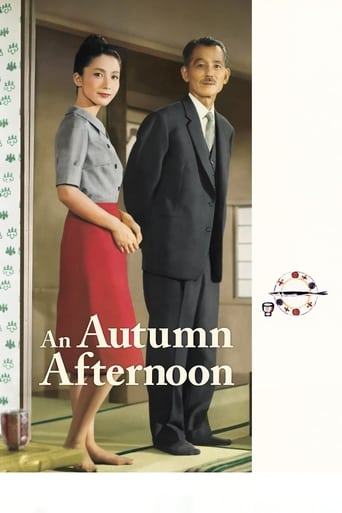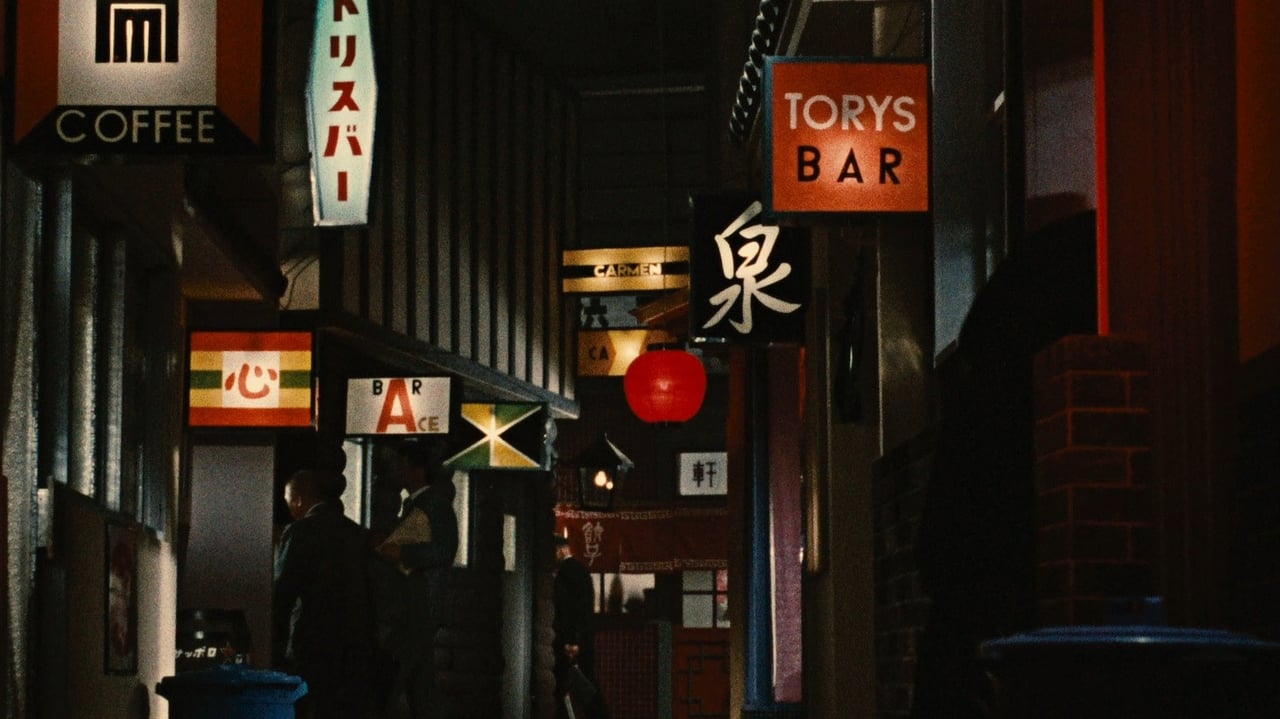elvircorhodzic
AN AUTUMN AFTERNOON is a drama which examines family relationships and life decisions in a warm way.The main protagonist is an ageing widower with a 32-year-old married son, and two unmarried children, 24-year-old daughter, and 21-year-old son. His wife has died just before the end of the war. His older son lives modestly with his wife in a small apartment. The widower and five of his classmates from middle-school hold regular reunions at a restaurant. They remember their old times and having fun with good food and drink. One of his friends has found a good opportunity for his daughter. She takes care of the housework, drunken father and younger brother. After a few events, the old man recognizes his own selfishness in keeping his daughter at home to look after him, and decides to arrange a marriage for her...Mr. Ozu has made another family drama that touches the soul. He examines topics related to a family, loneliness, alcoholism, marriage, through relationships between parents and children. His emotional space is narrowed to everyday life, in which a thin line separates the joy and the sorrow. He points to the transience of life through a family melodrama.The scenery is almost closed and spatially confined, that suggesting a monotonous daily routine. The characterization is excellent.Chishū Ryū as Shūhei Hirayama is a reserved and quiet old man who finds moments of his happiness in having fun, alcohol and beautiful owner of a bar. He skillfully hiding his inner emotion. He has tried to resist the transience of life, of course, to no avail. Shima Iwashita as Michiko Hirayama is his devoted daughter. She is aware of her situation, but unhappy at leaving his father and brother. Keiji Sada (Kōichi Hirayama) and Mariko Okada (Akiko Hirayama) are very entertaining as a quarrelsome couple, which is burdened with a material world. Anyway, life goes on.
Sergeant_Tibbs
Having only seen two other films from Yasujiro Ozu - Tokyo Story and Late Spring, both of which are thoroughly impressive - it's hard to shake that An Autumn Afternoon is praised solely for being his final film. I thought that premise was familiar - it's borrowed from Late Spring at the very least, and most likely from more of Ozu's films. However, it's difficult to feel that he's necessarily exploring it in a deeper more interesting way. It's a different angle, focusing on the father's perspective, but although I like the actors the plot felt so meandering that it didn't engage me, though nor did it bore me. It feels a little too derivative. Ostensibly Ozu's films suit a black and white environment as the colour pastilles don't have the same richness his traditional cinematography provides. However, if anything, by its end it captures a striking image of loneliness. It accentuates the irony of sending offspring to marry just to result in this, as though it's a cycle of life. Perhaps Ozu's own repetitiveness evokes that cycle even more, though it hardly resonates 50 years later in the West. Still, it's a solid film worth watching. I'll see what else Ozu has in store for me.7/10
David Conrad
Ozu made the same movie again and again, so it is perhaps no surprise that his final one is arguably the best of all. In "Sanma no Aji," Ozu balances all of the usual themes of his films—generation gaps, the different aspirations of men and women in Japanese society, changing attitudes toward consumerism, and the absent presence of the Pacific war in Japan's collective memory—with his exceptional finesse and customary sensitivity. In this outing the discussions of the war are more overt than usual, though they extend no further than the drunken reminiscences of old men in a restaurant. These few, understated scenes are crucial: the war was the great break after which virtually nothing in Japan would be the same, and the rift it creates between the collective memories of the young and the old is in many ways the proximate cause of the movie's more visible and contemporary rifts: the rifts of lifestyle in Japan's postwar economic environment. The film is best appreciated with some knowledge of its historical background, but casual fans of Japanese cinema should find much to enjoy as well. Daisuke Kato, recognizable from Kurosawa movies like "Seven Samurai," has a remarkable turn as Ryu's nostalgic drinking companion and former military subordinate.
solstice5555
I can whole-heartedly relate to previous reviewers' sentiments about this movie. From my own perspective it is also an awesome celebration of beauty. The theme is the same Ozu's favorite—separation of father and his grown-up daughter-- however it is presented in a different, less nerve-wrecking and more humorous way (as compared to Late Spring), but most of all -- within the colorful kaleidoscope of everyday things looking as works of art in themselves. Ozu rejoices in showing the beauty of such mundane objects as mugs, bowls, kimonos, tables, lamp shades, houses, fences, even industrial chimneys and such. Colors and shapes are arranged into perfect compositions and sometimes it seems that still objects actually govern the mood and the flow of people around them. The parallel with Tarkovskij's movies, like Solaris and Stalker, where the harmony of individual objects creates its own layer of movie symbolism, seems natural, only Russian movies were shot more than a decade later. I watched An Autumn Afternoon several times with the same joyful interest and gratitude for the gift of showing us the beauty of everyday life.


 AD
AD

